
Irura is a town located in the province of Gipuzkoa, in the autonomous community of Basque Country, northern Spain.
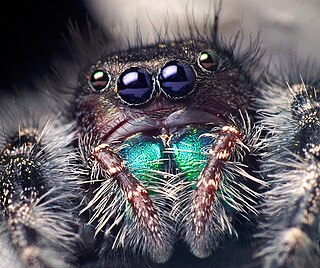
Phidippus is a genus in the family Salticidae. Some of the largest jumping spiders inhabit this genus, and many species are characterized by their brilliant, iridescent green chelicerae. Phidippus is distributed almost exclusively in North America, with the exception of two exported species. As of January 2021, there were about 80 described species in the genus. Species previously described in Phidippus which are found in India and Bangladesh do not belong in this genus.

Habronattus is a genus in the family Salticidae. Most species are native to North America. They are commonly referred to as paradise spiders due to their colorful courtship ornaments and complex dances, similar to birds-of-paradise.
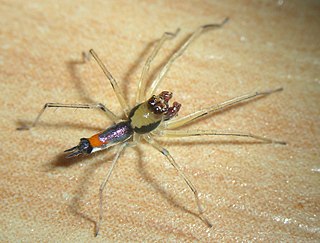
Asemonea is a genus of jumping spiders that was first described by Octavius Pickard-Cambridge in 1869.

Beata is a genus of jumping spiders that was first described by George Peckham & Elizabeth Peckham in 1895.
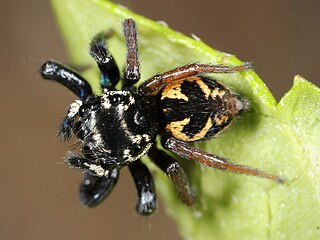
Corythalia is a genus of jumping spiders that was first described by Carl Ludwig Koch in 1850.

Cotinusa is a genus of jumping spiders that was first described by Eugène Louis Simon in 1900.
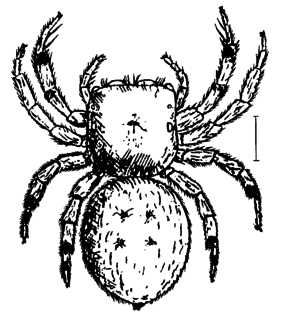
Irura is a genus of the spider family Salticidae.
Kima is a genus of spiders in the family Salticidae.

Lyssomanes is a spider genus of the family Salticidae, ranging from South and Central America, up to the southern United States.
Marengo is a genus of Asian jumping spiders that was first described by George and Elizabeth Peckham in 1892. The name is derived from Marengo, a village in Italy and the name of Napoleon's horse.

Mendoza is a genus of jumping spiders that was first described by George and Elizabeth Peckham in 1894.
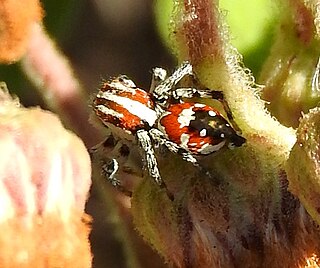
Nycerella is a genus of spiders of the jumping spider family, Salticidae.
Ogdenia is a monotypic genus of jumping spiders containing the single species, Ogdenia mutilla. It was first described by George Peckham in 1907, and is only found on Borneo.

Zygoballus is a genus of jumping spiders found in North and South America.

George Williams Peckham and Elizabeth Maria Gifford Peckham were a married couple who were early American teachers, taxonomists, ethologists, arachnologists, and entomologists, specializing in animal behavior and in the study of jumping spiders and wasps.

Zygoballus sexpunctatus is a species of jumping spider which occurs in the southeastern United States where it can be found in a variety of grassy habitats. Adult spiders measure between 3 and 4.5 mm in length. The cephalothorax and abdomen are bronze to black in color, with reddish brown or yellowish legs. The male has distinctive enlarged chelicerae and front femora. Like many jumping spiders, Z. sexpunctatus males exhibit ritualized courtship and agonistic behavior.

Zygoballus rufipes, commonly called the hammerjawed jumper, is a species of jumping spider which occurs in the United States, Canada, and Central America. Adult females are 4.3 to 6 mm in body length, while males are 3 to 4 mm.

Habronattus mexicanus is a jumping spider species in the genus Habronattus. It is the type species of that genus.















